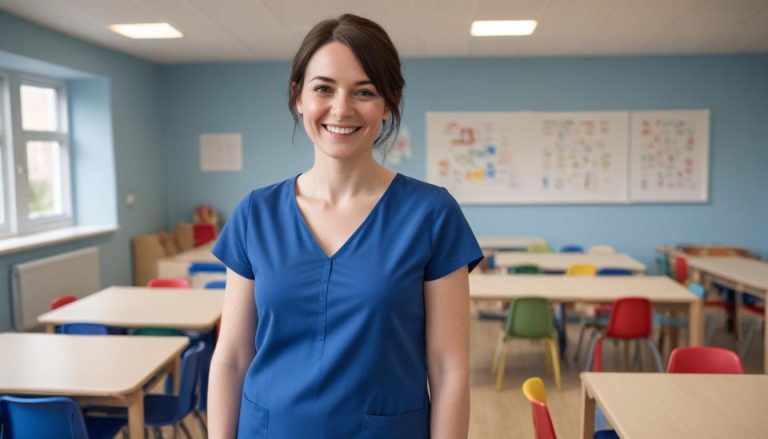Summary
- Definition and Characteristics: Adult-led play involves adults planning and guiding activities, ensuring they align with children’s developmental goals. It includes structured activities like storytime, art, and music sessions.
- Benefits: This approach promotes skill development in language, cognitive abilities, and physical skills. It also builds confidence and social skills through guided interactions.
- Balancing Approaches: A mix of adult-led and child-initiated play is important for holistic development. While adult-led play provides structure, child-led play offers freedom for exploration.
- Practical Implementation: Successful adult-led play incorporates children’s interests, reflects on experiences, and adapts activities for inclusivity. Engaging parents in planning enhances the overall learning experience.
As early years practitioners, we’re often abuzz with talk about the different approaches to play, one of which is adult-led play. Let’s dive into this concept and explore its significance in early childhood education.
Defining Adult-Led Play
Adult-led play involves activities where the adult takes charge. They plan, guide, and lead the play. This could be a planned activity or a spontaneous one, but the adult sets the direction.
Characteristics of Adult-Led Play
Structured Activities
These are activities with a clear objective. The adult decides on the activity and ensures it aligns with developmental goals. Examples include:
- Storytime: Adults read stories, encouraging children to listen and ask questions.
- Art and Craft: Adults guide children in creating something specific, like making a paper boat.
- Music Sessions: Singing songs with actions and encouraging children to join in.
Intentional Planning
Adults plan activities based on the children’s needs and interests. They consider what the child will learn. It requires observation and understanding of each child’s developmental stage.
Purposeful Interaction
The adult interacts with intention. They may introduce new vocabulary, model behaviour, or scaffold learning. This means they support the child in a way that helps them move to a higher level of understanding.
Benefits of Adult-Led Play
Skill Development
Adult-led play targets specific skills:
- Language: Through storytelling and discussion, children expand their vocabulary.
- Cognitive Skills: Activities may focus on counting, colour recognition, or problem-solving.
- Physical Skills: Guided outdoor games can enhance motor skills.
Confidence Building
In a structured setting, children gain confidence. They know what to expect and can take risks within a safe boundary.
Social Skills
Through adult-led activities, children learn to share, take turns, and work together. They watch the adult model positive interactions.
Balancing Child-Initiated and Adult-Led Play
Adult-led play should complement child-initiated play, where children decide what to do. Both types of play have a place in early years settings, offering different benefits.
Freedom and Structure
While adult-led play provides structure, child-initiated play offers freedom. Both are necessary for holistic development. Practitioners strive to balance these approaches.
Observing and Responding
Observation is key. By watching children during play, practitioners can shape their adult-led activities. They notice interests and developmental needs, tailoring activities accordingly.
Challenges in Adult-Led Play
Over-Structuring
One challenge is over-structuring. Children need space to explore. Too much direction can stifle creativity.
Ensuring Engagement
Keeping all children engaged can be tricky. Different interests and learning paces require adaptability from the practitioner.
Maintaining Flexibility
Even in adult-led play, flexibility is essential. Sometimes activities need to change direction based on children’s responses.
Practical Examples of Adult-Led Play
Group Times
Gathering children for group time activities can be highly structured. Games, songs, or discussions led by an adult can teach social skills and knowledge.
Themed Sessions
Themes like “Under the Sea” allow adults to lead art, storytelling, and science activities around a central idea. This provides a cohesive learning experience.
Cooking Activities
Cooking with children is a great way to involve adult-led play. Measuring, mixing, and following recipes teach life skills, maths, and language.
Incorporating Child Interests in Adult-Led Play
Listening to Children
Successful adult-led play often stems from listening. Children’s interests guide the planning. If many children are fascinated by dinosaurs, the adult might plan a dinosaur-themed activity.
Flexibility in Execution
Adults might start with a plan but adapt based on children’s engagement. If children show interest in a specific aspect, the adult shifts focus to maintain interest.
Role of Reflection in Adult-Led Play
Reflective practice enhances adult-led play. After activities, practitioners reflect on what worked and what didn’t. This improves future planning.
Gathering Feedback
Feedback from children and colleagues helps refine approaches. Colleagues can provide insights that you might not have considered.
Self-Evaluation
Adults evaluate their approach. They consider whether the activities met their learning objectives and how they could be improved.
Supporting Cultural Diversity
Adult-led play can embrace cultural diversity. Practitioners should include diverse stories, music, and activities. This supports an inclusive environment.
Incorporating Different Perspectives
Activities should celebrate different cultures. Cultural themes can be used in stories, songs, and games.
Language and Expression
Using different languages and cultural references in adult-led play supports bilingual or multilingual children. It allows all children to appreciate diversity.
Creating an Inclusive Environment
Adaptations for Learning Needs
Adult-led play must consider children with different learning needs. Adapt activities so all can participate and benefit.
Encouraging Participation
Ensuring every child feels included is essential. Modify activities so each child can engage, no matter their ability.
Encouraging Parental Involvement
Parents can play a role in adult-led activities. Sharing planning and asking for family input can enrich the experience.
Sharing Ideas
Discussing themes and activities with parents allows families to extend learning at home. It fosters a community learning approach.
Inviting Participation
Parents may join for sessions or lead special activities. This engagement strengthens the home-school relationship.
Adult-Led Play in the EYFS Framework
Planned Learning
Adult-led play aligns with the Early Years Foundation Stage (EYFS). It involves intentional, planned activities that cover specific learning goals.
Assessment and Progress
Practitioners can use observations during adult-led play to assess progress. Activities help logachievements in learning journals.
Continuous Improvement
Aligning with EYFS ensures a focus on continuous improvement. Practitioners use guidelines to refine adult-led play.
Final Thoughts
Adult-led play in the early years offers rich opportunities for structured learning. It supports skill development and confidence. Balancing this with child-led play ensures a rounded experience. Practitioners play an important role, planning, guiding, and reflecting to create engaging environments for all children. Through thoughtful implementation, adult-led play can be a powerful tool in nurturing young minds.
Subscribe to Newsletter
Get the latest news and updates from Care Learning and be first to know about our free courses when they launch.







